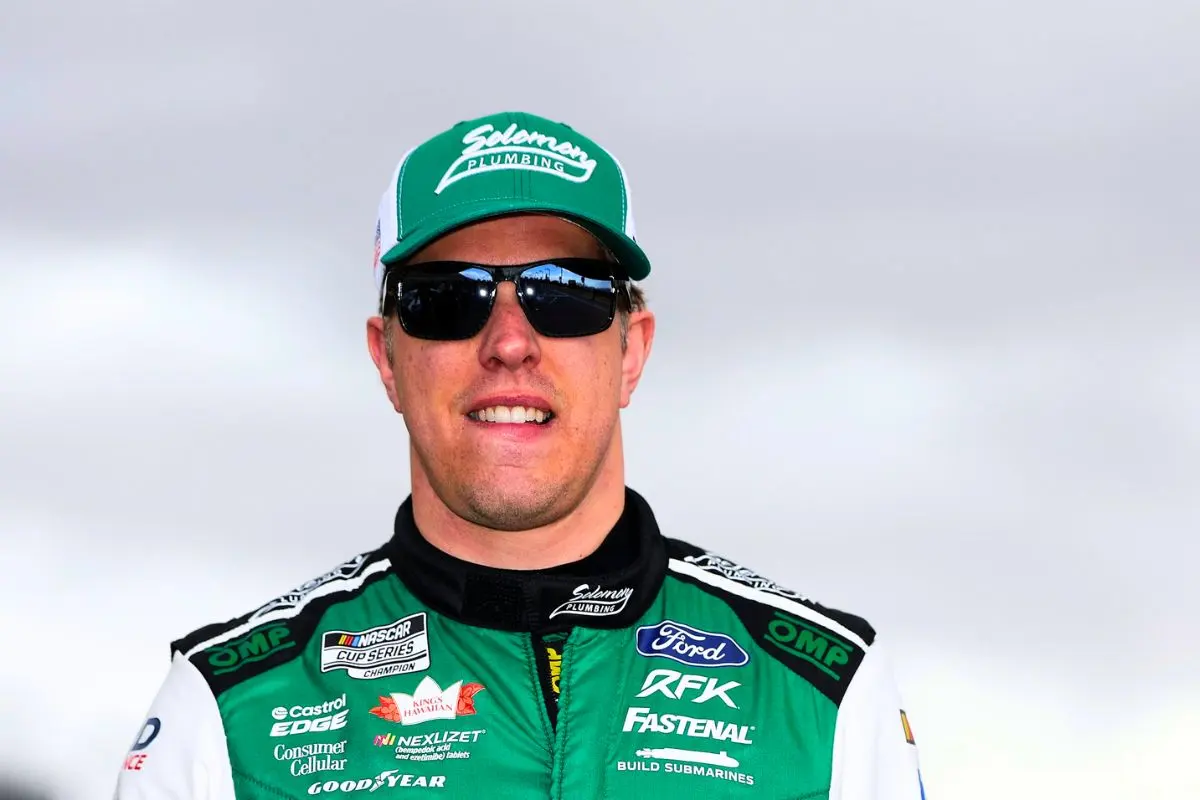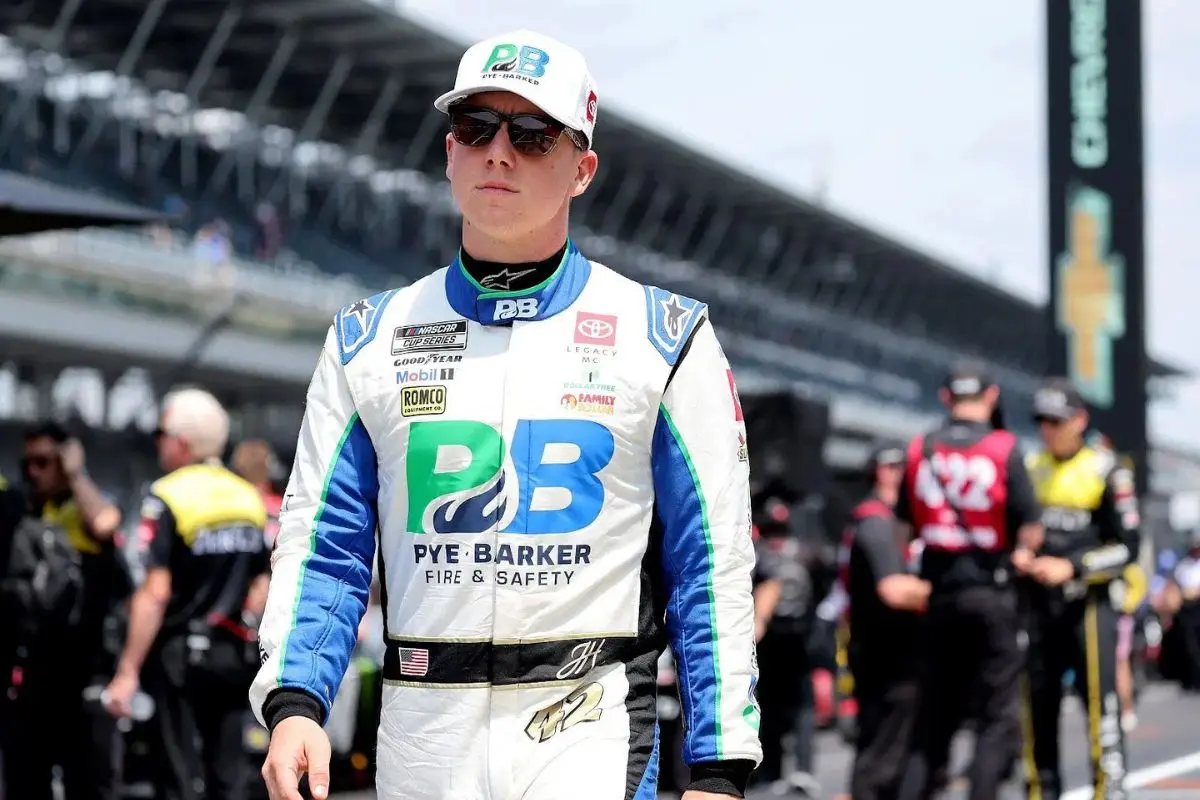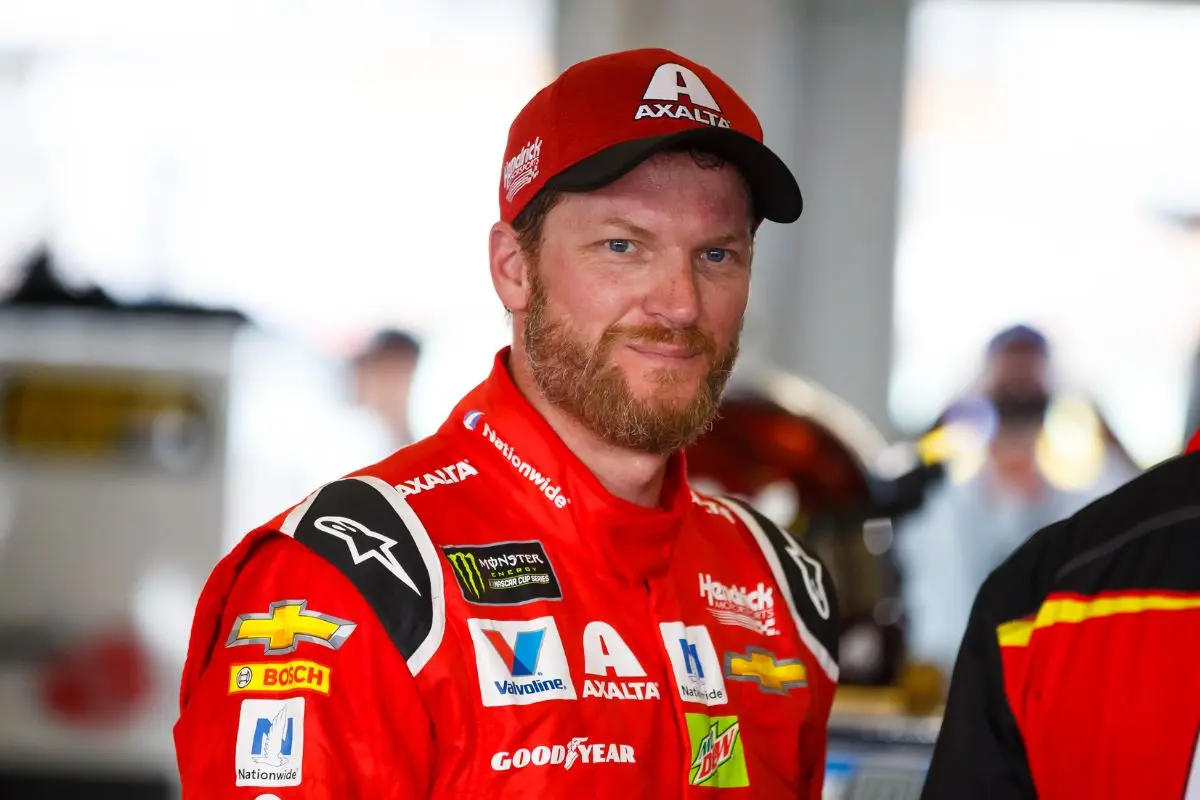NASCAR’s Most Devastating Blocks: NASCAR is notorious for its breathtaking blocks that can transform races in an instant, often with dire consequences. Notable examples include John Hunter Nemechek’s ill-timed move at the 2024 Brickyard 400, resulting in a massive pileup, and Carl Edwards’ fateful block in 2016 that dashed his championship dreams.Each block tells a story, capturing the core of excitement and danger that defines the sport. There’s much more to uncover about these unforgettable moments.
Key Highlights
- John Hunter Nemechek’s block at the 2024 Brickyard 400 triggered a five-car pileup, showing the high stakes of blocking in NASCAR.
- Carl Edwards’ aggressive block on Joey Logano in NASCAR 2016 season resulted in a crash that cost him the championship, highlighting the risks of bold maneuvers.
- AJ Allmendinger’s ill-timed block at Pocono in NASCAR 2010 season led to a ten-car pileup, demonstrating the fine line between teamwork and individual ambition.
- Austin Dillon’s 2019 blocking move against Clint Bowyer caused a catastrophic chain reaction, affecting multiple competitors and ending the race under caution.
- Late blocks by teammates Joey Logano and Brad Keselowski in the NASCAR 2021 season Daytona 500 eliminated both from contention, altering race dynamics significantly.
The 2024 Brickyard 400: John Hunter Nemechek’s Costly Block
In 2024 Brickyard 400, John Hunter Nemechek’s ill-timed defensive maneuver ultimately unraveled the race’s outcome, casting a long shadow over his performance. As the race approached its climax with an overtime restart, Nemechek’s decision to aggressively defend his fifteenth position against Daniel Hemric proved to be a pivotal error.
In an attempt to secure his place on the track, Nemechek veered left into Hemric’s path, triggering a chain reaction that resulted in a five-car pileup. This incident not only ended the race for several competitors, including Denny Hamlin and Alex Bowman, but also clouded what otherwise could have been a triumphant moment for Kyle Larson, who went on to claim victory.
Nemechek’s actions exemplify the thin margins that define NASCAR, where every decision is scrutinized and can ripple through the field. His impatience, as he attempted to safeguard a modest position, ultimately jeopardized the race for countless others.
Carl Edwards’ 2016 Championship Loss Due to a Bad Block on Joey Logano
What drives a driver to make a split-second decision that could alter the course of their career? In the high-stakes environment of NASCAR, every moment is a blend of instinct, strategy, and sheer adrenaline. Carl Edwards found himself in such a moment during the 2016 NASCAR championship race at Homestead, where the weight of his aspirations collided with the peril of miscalculation.
With just ten laps remaining, Edwards attempted a bold block on Joey Logano, believing he had cleared him. The tragic misjudgment led to a catastrophic crash, resulting in a chain reaction involving multiple drivers. This pivotal instant marked the difference between triumph and despair, ultimately costing Edwards not only the race but also his initial championship title.
"CARL EDWARDS INTO THE WALL!"
Edwards' crash after blocking Joey Logano was a championship-defining moment at Homestead-Miami in 2016. #NASCARPlayoffs pic.twitter.com/33TobMsVf9
— NASCAR on NBC (@NASCARonNBC) October 23, 2024
The aftermath left fans in disbelief as they witnessed a promising season unravel in mere seconds. Edwards’ boldness, once a hallmark of his driving style, transformed into a poignant reminder of the razor-thin margins in NASCAR. His decision encapsulated the core of competitive racing—a relentless pursuit of glory that can turn to heartbreak in an instant.
Ryan Newman’s Crash at the 2020 Daytona 500
Although the 2020 Daytona 500 is often remembered for its exciting finish, it is Ryan Newman‘s harrowing crash that stands out as a striking reminder of the inherent dangers of NASCAR racing. As Newman led the final lap, he found himself in an unstable position, attempting to fend off challenges from behind. The dynamics of the draft played against him, with Ryan Blaney pushing him hard down the backstretch.
In a split instant, a seemingly routine block devolved into a catastrophic scenario. Newman’s attempt to protect his lead resulted in a fierce collision, sending his #6 car violently into the wall. The car flipped upside down, and the subsequent impact from Corey LaJoie’s vehicle was nothing short of shocking. This sequence of events highlighted the fine line between aggressive racing and devastating outcomes.
As Newman’s car came to rest, upside down and sliding across the finish line in ninth position, the weight of the moment gripped the audience. Fans held their breath, fearing for Newman’s life, while the NASCAR community rallied in support. Remarkably, Newman survived with serious injuries, showcasing the resilience of both the driver and the sport.
Brad Keselowski and Michael McDowell’s Last-Lap Block at the 2024 GEICO 500
In a dramatic turn of events during the 2024 GEICO 500, Brad Keselowski‘s bold maneuver against Michael McDowell in the final laps highlighted the volatility of superspeedway racing. McDowell, having started from pole and led a commendable 36 laps, was poised for a potential victory when the dynamics shifted dramatically on the final lap.
As they navigated the environment of Talladega, McDowell’s lead was threatened by Keselowski, a seasoned driver chasing his sixth win at this iconic track. In a tense confrontation exiting Turn 4, McDowell attempted to block Keselowski’s surge, a decision that could have solidified his victory. However, the alternative block came too late.
Keselowski, undeterred, made contact with McDowell’s #34 Ford, a moment that spiraled into chaos. The collision sent McDowell into the outside wall, igniting a multi-car wreck that dramatically altered the race’s outcome.
This incident not only denied McDowell his moment of glory, finishing 31st, but also paved the way for Tyler Reddick, who seized the opportunity to claim his initial win of the season.
Moreover, the sight of Corey LaJoie’s car skidding across the finish line on its side served as a glaring reminder of the perilous nature of NASCAR’s superspeedway events.
Richard Petty Motorsports Teammates’ Infamous Block at Pocono (2010)
The 2010 NASCAR race at Pocono became a defining moment for Richard Petty Motorsports (RPM), showcasing the unstable balance between teamwork and individual ambition. As RPM navigated financial difficulties, the pressure to perform intensified for its drivers, particularly Kasey Kahne and AJ Allmendinger.
In the final lap, with Kahne aggressively pursuing a position, Allmendinger executed an ill-timed block that would lead to chaos. Allmendinger, attempting to protect his spot, cut off Kahne’s advance, inadvertently pushing him into the wet infield grass. This miscalculation resulted in a loss of control that sent Kahne’s car careening back onto the track, a split-second decision that triggered a devastating chain reaction.
The following wreck involved nearly ten cars, critically affecting the race outcome and forever embedding this incident in NASCAR lore. The aftermath of the block highlighted the unstable nature of intra-team dynamics.
While teammates are often expected to support one another, the competitive drive can lead to decisions that jeopardize safety and strategy. Fortunately, all drivers emerged unscathed, but the incident emphasized a critical lesson: in racing, the line between collaboration and competition is razor-thin.
The 2004 NASCAR Championship Loss for Dale Earnhardt Jr.
NASCAR’s environment often leads to heart-wrenching moments that can define a driver’s career, as evidenced by Dale Earnhardt Jr.’s near-miss in the 2004 championship. The newly introduced Chase for the Nextel Cup heightened the pressure, and Earnhardt Jr. found himself in a prime position to contend for the title.
However, a critical mistake during the race at Atlanta ultimately derailed his championship aspirations. With just 14 laps remaining, Earnhardt Jr. was in third position, poised to challenge for the lead. He attempted to execute a daring move to pass Mark Martin for second but misjudged the space between Martin and Carl Edwards. The result was catastrophic: his #8 Chevy clipped Edwards’ bumper, sending him crashing into the inside wall.
This incident not only resulted in a disheartening 33rd-place finish but also shattered his chances of closing the gap on leader Kurt Busch.
The fallout from this pivotal moment can be summarized in three notable impacts:
- Earnhardt Jr. plummeted to fifth in the NASCAR championship standings, losing valuable points.
- Kurt Busch maintained his lead, effectively sealing his path to the title.
- Carl Edwards achieved a career-best third-place finish, further complicating Earnhardt’s standings.
This moment serves as a poignant reminder of the thin margins in NASCAR, where one miscalculation can alter a driver’s legacy and reshape the championship landscape.
Kurt Busch’s Inaugural Daytona Truck Race Wreck (2000)
Amid the atmosphere of the inaugural Craftsman Truck Series race at Daytona in 2000, a catastrophic crash unfolded that would etch itself into the annals of NASCAR history. The incident, involving rookie Kurt Busch, would serve as a vivid reminder of the unpredictable nature of racing. As Busch found himself three-wide alongside Rob Morgan and Geoff Bodine on the backstretch, a poorly timed block by Morgan released chaos.
The resulting wreck was monumental, involving multiple vehicles and resulting in a series of striking events:
- A Chain Reaction: Morgan’s block triggered a domino effect, sending Bodine’s truck airborne, a sight that shocked both fans and competitors alike.
- Devastating Impact: The collision involved 13 trucks in total, with Bodine’s engine being violently ejected 355 feet into Turn 2, an indication of the ferocity of the crash.
- Miraculous Survival: Despite the severity of the wreck, Bodine emerged with only a few broken bones and a concussion, emphasizing the resilience of NASCAR drivers.
The race paused for a 55-minute red flag, allowing spectators to process the magnitude of what had just transpired. Ultimately, Mike Wallace claimed victory, while Kurt Busch finished a commendable third.
Team Penske’s Destruction of a 1-2 Finish at the 2021 Daytona 500
Often, the Daytona 500 serves as a microcosm of the unpredictability inherent in NASCAR, where fortunes can shift dramatically in mere moments. The 2021 edition exemplified this volatility, particularly for Team Penske, who were poised for a remarkable 1-2 finish with drivers Joey Logano and Brad Keselowski. However, a late-block maneuver—intended to shield their positions—proved disastrous, resulting in a collision that eliminated both contenders from the race.
This pivotal moment not only altered the path of the race but also reshaped the narrative of the season. In the chaos that ensued, several top contenders, including Kyle Busch, Bubba Wallace, and Austin Cindric, found themselves unwitting participants in the wreckage. As the dust settled, Michael McDowell seized the opportunity, claiming his initial-ever NASCAR Cup Series victory during the turmoil.
Brad Keselowski Sends Carl Edwards Airborne at the 2009 Aaron’s 499
The 2009 Aaron’s 499 at Talladega stands as a pivotal moment in NASCAR history, defined by an astonishing and controversial incident involving Brad Keselowski and Carl Edwards. As the race approached its climax, these two drivers engaged in a fierce battle, indicative of the high-stakes nature of restrictor plate racing. In a split second, Keselowski’s seemingly innocuous bump on Edwards’ left rear quarter panel triggered a catastrophic sequence of events.
The incident can be analyzed through three critical aspects:
- The Bump: Keselowski’s maneuver, while aggressive, was a calculated risk in a sport where positioning is paramount. However, the execution proved disastrous, sending Edwards’ #99 Ford airborne.
- The Crash: The airborne car struck the catch fence, resulting in a shower of debris that injured eight spectators. This incident highlighted the inherent dangers of NASCAR and raised questions about safety measures—both on and off the track.
- The Aftermath: Despite the wreck, Edwards emerged unscathed and famously jogged across the finish line. Meanwhile, Keselowski celebrated his initial-ever Cup victory, though the shadow of controversy loomed large.

This moment encapsulates the dual nature of NASCAR—where triumph and tragedy coexist, and where a single decision can alter lives and legacies. The Keselowski-Edwards incident remains etched in the minds of fans, a reminder of the fine line between daring and recklessness.
Austin Dillon’s 2019 Coke Zero Sugar 400 Wreck from the Lead
As the tension mounted in the closing laps of the 2019 Coke Zero Sugar 400, Austin Dillon’s hopes for a triumphant finish unraveled in a dramatic twist of fate. Having showed remarkable skill throughout the race, Dillon found himself in the enviable position of leading as the intensity escalated.
However, the looming threat of rain added an urgent layer of complexity, pushing drivers to adopt aggressive strategies in pursuit of vital positions.
In a significant moment, Dillon attempted to thwart Clint Bowyer’s advancing momentum with a block. This decision, while born from a desire to protect his lead, ultimately proved catastrophic. The contact between the two vehicles sent Dillon spinning, igniting a chain reaction that resulted in a monumental wreck involving several notable competitors, including Joey Logano, Chase Elliott, and Kyle Busch.
The severity of the incident highlighted the inherent risks present in NASCAR, where a single maneuver can alter the path of multiple drivers’ races.
Ultimately, the race concluded under caution, with rain forcing the officials’ hand. Dillon’s heart-wrenching 33rd-place finish sharply contrasted with the celebratory atmosphere surrounding Justin Haley, who secured his initial NASCAR Cup Series victory during the chaos.
News in Brief: NASCAR’s Most Devastating Blocks
The history of NASCAR is replete with moments of high tension and dramatic blocks that greatly impacted race outcomes. From John Hunter Nemechek’s costly maneuver at the 2024 Brickyard 400 to the infamous incidents involving Carl Edwards and Brad Keselowski, these actions underscore the fine line between tactical racing and perilous risk. Such instances not only evoke strong reactions from fans but also shape the careers of drivers, illustrating the unpredictable nature of motorsport.
ALSO READ: NASCAR 2024 Awards in Charlotte: A Star-Studded Celebration of Sport’s Heroes





